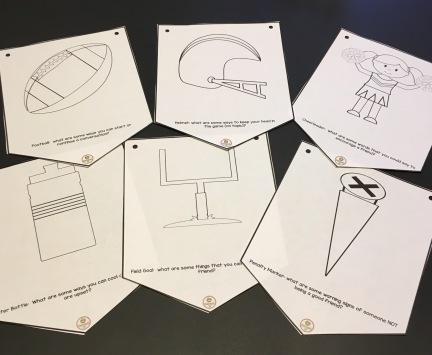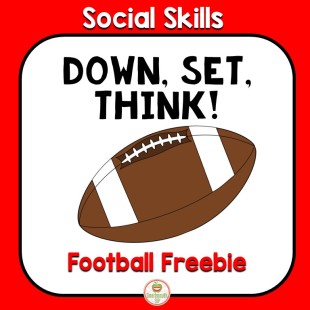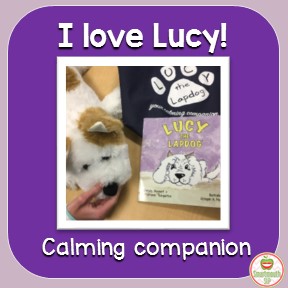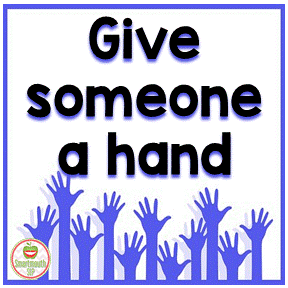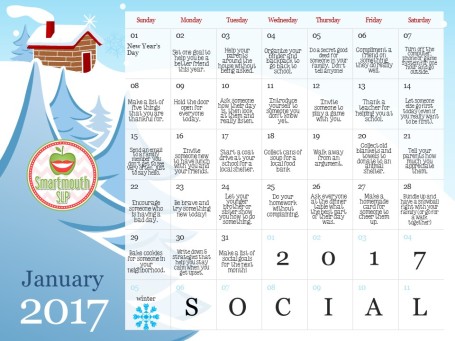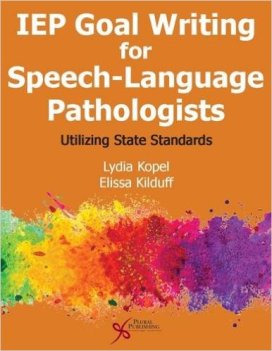
Two of the smartest SLPs I know, Lydia Kopel and Elissa Kilduff, have recently become published authors! The process to publish IEP Goal Writing for Speech Language Pathologists has been daunting, but our county has had the benefit of being the guinea pigs of the draft version of this fantastic resource! Now before you roll your eyes and dismiss this as just another goal bank, think again. This little orange treasure chest takes state common core standards (and the Early Learning Standards for PreK) and aligns them to the associated speech-language skill. The PreK-12th grade resource includes the communication areas of: vocabulary, questions, summarize, main idea and details, critical thinking, pragmatics (YAY), syntax and morphology and articulation/phonological processes. Then, you look at the associated speech-language skill and it further breaks it down into steps to mastery in each area AND the prerequisites needed!
So what can you do with all of this amazing information? Well, let me share with you how I have used it! It allows me to look at the grade level common core standards that my students are working on, what area of the core it addresses and the related speech-language skills for each standard. Then, it also allows me to look at each area of communication (see list above) and the pre-requisite skills needed to achieve a goal. For example, in the communication area of Summarizing (which is embedded throughout the grade levels in reading/literature/listening/speaking standards):
Skill: Summarize # of details from a story.
Pre-requisite skills: answer questions, sequence concepts, identify narrative elements, retell, identify important/unimportant details.
This helps me identify the baseline of where my student is functioning with this skill, setting the goal and then being able to see how to scaffold backwards to fill in missing skills if my student isn’t progressing, or scaffold forwards to write higher level goals when they meet the initial one. It is basically a SLP road map to navigate communication skill acquisition in a logical and sequential manner, with the bonus of facilitating student success educationally!
There is even a section on Pragmatics (hallelujah!). These skills are a different animal of sorts, because social language acquisition is not necessarily linear. Michelle Garcia Winner notes that social language skills are often broadened across time rather than acquired in a progressive, vertical timeline like other areas of language. Our students may not move on to higher level skills necessarily, but we can deepen and grow the skills that they do have within that skill set. I love how this book breaks down the social skills into distinct areas with the embedded skills in each area. This is very helpful in talking with parents (or advocates) during the IEP process along with the visual of the Social Learning Tree from Social Thinking®. I also share with my teachers, to help them understand what we are working on socially and how it may be related to what they are working on in the classroom. This is a valuable tool to keep me focused and write specific, measurable goals for my students with social language impairments, an area that is often nebulous as compared to language or articulation.
If you make one purchase for yourself in the new year, consider making it THIS ONE as it will more than pay for itself in giving you a clear, well organized road map to making your goal writing and IEPs easier! You too will be flipping through the pages saying, “Where have you been all my SLP life?!”
*No money or materials have been provided in exchange for this review. It is simply my heartfelt endorsement of a fantastic product for SLPs!
